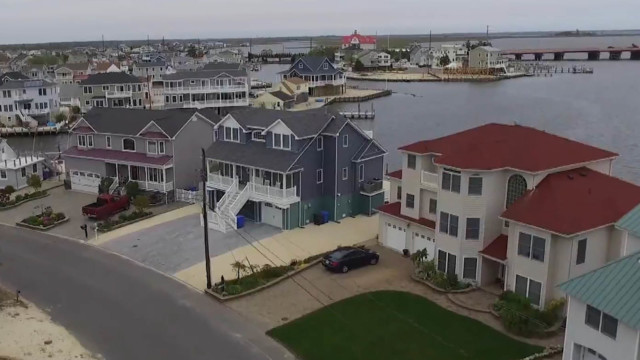June 1 marks the start of the U.S. hurricane season. This year also marks the five-year anniversary of Super Storm Sandy that slammed into the Northeast seaboard of the United States.
Many homes have since been rebuilt but a new debate is brewing – how to ensure those homes are still there 50 or 100 years from now.
CGTN America’s Karina Huber reports.
When Superstorm Sandy slammed into New Jersey back in 2012, Stafford Township took a direct hit. 3000 of its homes were destroyed.
Most properties have since been rebuilt – many elevated by stilts – but damaged homes still remain.
Mayor John Spodofora said the impact was catastrophic. He’s now focused on preparing for future storms.
“I’m proposing a beam to go all the way down along the edge of the creek all the way back to the bay,” he said.
Since Sandy, other nearby communities have built similar barriers against storm surge. On Long Beach Island – the Federal Government paid $232 million to build a 23-kilometer network of sand dunes and berms. Spodofora is hoping the government will pay for his plan too – perhaps as much as $100-million.
“This is a way to do a cost-effective program that would alleviate a lot of future damage,” he said.
But environmentalists say the approach its short-sighted based on long-term outlooks on water levels.
According to a recent Rutgers University report, New Jersey’s sea levels are expected to rise by one foot by 2030 and almost 2 feet by 2050. It is estimated that by 2100 communities like Long Beach Island will be underwater.
“It’s a little silly to try to deny the obvious,” Ken Abel, director of Marine Field Station at Rutgers University said. “The people on the water – either living on the water or working on the water know things are changing and we have to move quickly in order to adapt.”
Abel said people should be moving out of the area instead of rebuilding.
“If you’re only thinking out one or two decades, you might be fine. Beyond that, it’s a different story,” he said.
The problem is most residents don’t want to leave.
“Long term it may be the right answer and I’m not saying not to do that. I’m just saying for right now let’s find a short-term solution,” Spodofora said.
In coastal New Jersey, that solution is focused on building walls not relocating.
 CGTN America
CGTN America

